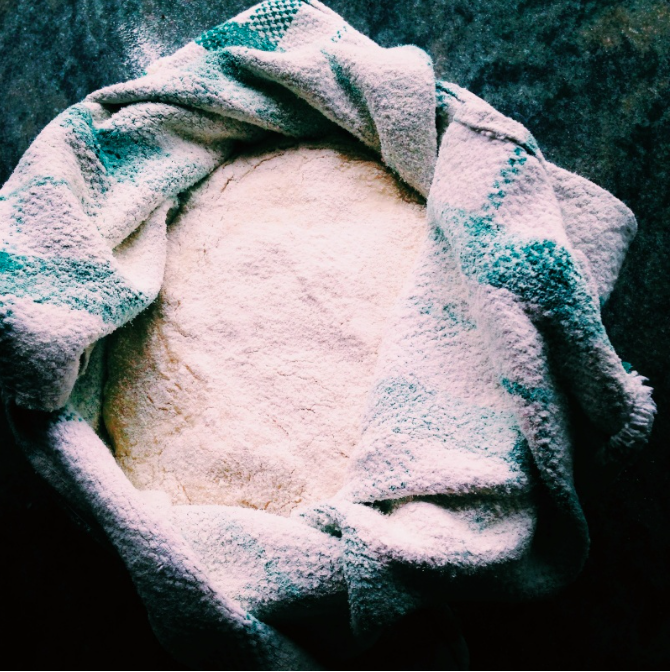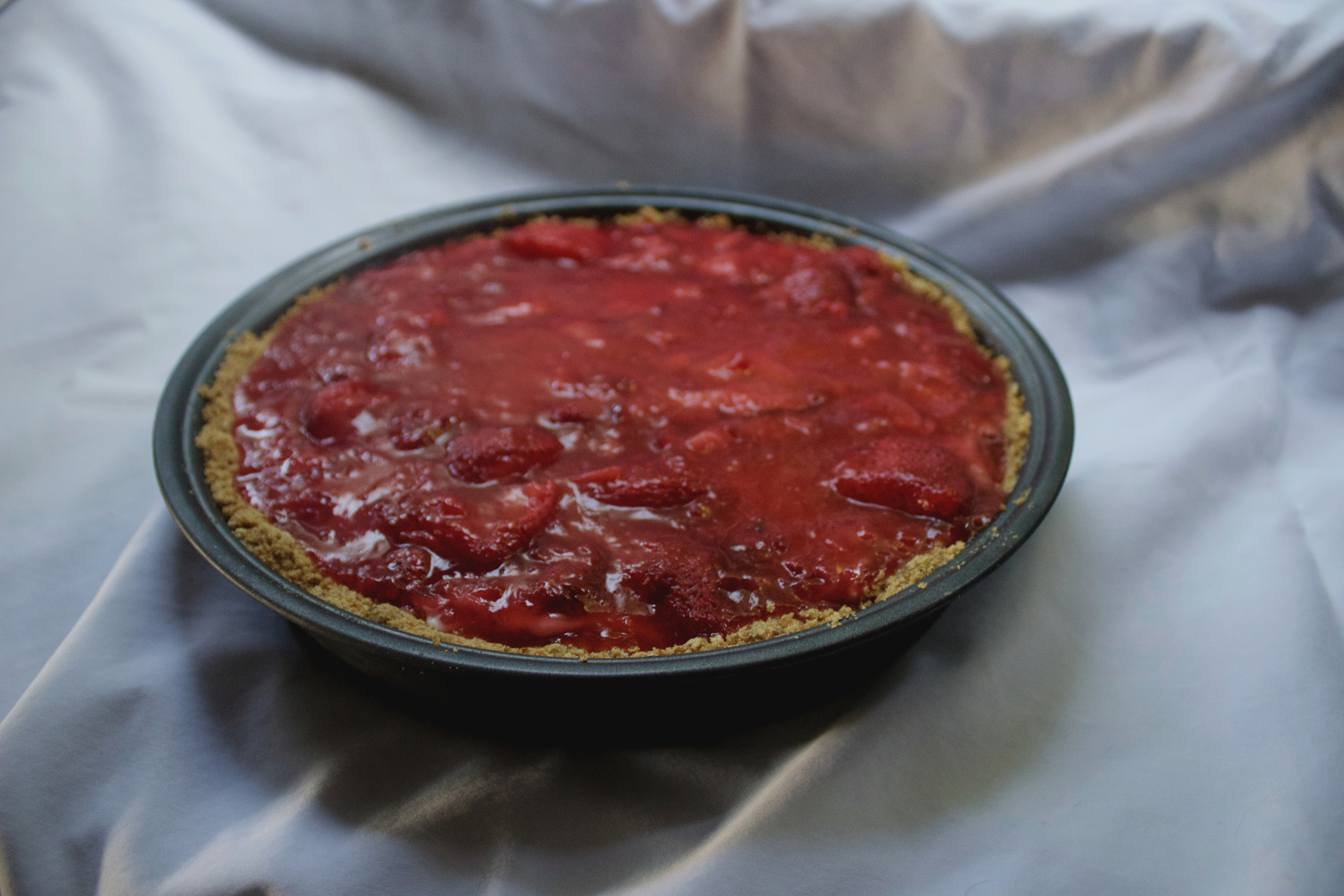Your Custom Text Here
A Church Potluck Favorite: "Pretzel Salad"
I grew up hungry. There wasn't a lot of food in the pantry, there wasn't a lot of time for love. I grew up "working class" and was raised by my siblings, because my parents worked so much. When they got home from the odd jobs they worked, they'd put Spaghetti-o's on the table and tried to get me to drink milk more. It was my sister who taught me to tie my shoes, frustrated one morning when I didn't want to go to kindergarten, the laces trailing behind me and tears welling in my eyes. I already felt like a failure at six years old. She grabbed my laces and taught me with patience, we got on the bus and she held my hand until I calmed down. A lot has changed between us, and that's the last time we were tender to each other. A lot has changed, but I still get worked up so easily. I grew up poor. I grew up poor and I didn't even know it. I grew up poor and knew no other way. I grew up poor when my parents worked four jobs and resented them years later for being too tired to listen to my day, my stories, my dreams of being a famous writer and never seeing them again. I grew up poor and never helped my mom around the house. When she needed it most. When she was so exhausted, she'd fall asleep at the dinner table. When she wasn't herself for so many years, fighting the good fight. She worked in a freezer once, in a grocery warehouse. My dad took a job once stuffing coupons into newspapers. They did it for us. They tried to make ends meet, to tie my laces and keep me young. All of this in Kentucky, where my brother stepped on a nail and he didn't want to tell our parents, in case it cost too much to fix. I asked him about it while I was in North Carolina in June. He still has the scar, and I still have the memory of the sacrifices everyone made, and how I was happy to be too young to understand them all.
One thing I was kept young about was food and levels of flavor until I had moved out of rural Pennsylvania and into Pittsburgh (arguably, still rural Pennsylvania). Until then, I only knew about cake layers, pizza toppings, adding a little more cream to my coffee and calling it something French--I called that cooking. I didn't know herbs existed in their green state, or that anything you saw at through the smudged bakery glass could be made at home. I didn't know a lot of things, because my mother fed a family of five on a dollar-store budget.
We come from Indiana low-country, an often underrepresented class that subsists itself on eggs covered in ketchup, twenty-year grudges, and first marriages that never seem to stick. It's a place where you can drive for twenty miles and still see the same rain cloud in the distance. A place where they get fresh water from a water tower, painted light blue and where kids climb to make out and smoke weed. It's a place with a Dairy Queen and two cemeteries: the Catholic graveyard and the Baptist graveyard. A place where the elasticity of money means being creative, stocking a deepfreeze in the garage with bulk cuts of meat, and eating more preservatives than maybe a neighboring longitudinal town. It means knowing what tastes good and sharing it with your family of five, putting a little extra in the brown paper lunches you pack when the school's get too expensive.
It's comfort food without the luxury of Southern heaviness--no buttermilk or animal fats. Too expensive. We budgeted with Crisco, Velveeta, and Great Value-brand butter, saving bacon fat in a mason jar by the stove for Sunday morning donuts. Everything was saved, everything reconfigured instead of throwing it out. I assume that's how this dessert was made. Some cream cheese was going beyond the saving point, some pretzels were stale. A woman no different than my mother--working class and a mother of three--layered and baked whatever she had on hand, set and cooled the product of her labor in the fridge. She told her friends who told her friends, who went to church and share it at potlucks. It was made cheaper with Jell-o, made easier with Cool Whip. It was adapted and streamlined for economy, using barely any heat and barely any ingredients. And once my mother got the recipe, it became a staple in our house. "Pretzel Salad" it's called. It's a working-class answer to the cheesecake, simple and sturdy and tart how you like it. It sweet enough to balance out all the salt-of-the-earth people I've met throughout my life, reminding me who I really am and where I really come from.
Strawberry and Pretzel Pie (Pretzel Salad)
Ingredients:
For the crust:
- 2 cups finely-crushed pretzels (to the point of coarse meal or flour)
- 1/3 cup firmly-packed brown sugar (light or dark--I preferred the stronger molasses in dark)
- 3/4 cup + 1 tb melted butter
For the cream cheese filling:
- 1 package cream cheese, room temperature
- 1/2 - 3/4 cup sugar (your preference. More tart means less sugar)
- 1/2 cup Greek yogurt, sour cream, or plain yogurt (up the sugar if using the former two options, so it isn't overwhelming)
- 2 teaspoon vanilla (optional)
Strawberry layer:
- 1 quart strawberries, hulled and smashed
- 1 cup sugar
- 1/2 lemon, zest and juice
- A slurry of 3/4 cup water and 3 TB cornstarch
Directions:
- Preheat oven to 350 and prepare a 9-inch pie plate with butter and parchment paper the bottom (optional)
- On the stovetop, melt butter gradually and set aside.
- In a food processor, pulse pretzels and brown sugar together until you get the consistency of corn meal or flour.
- In a mixing bowl, combine two cups of the dry pretzel mixture with the melted butter. Stir with a wooden spoon until just combined, then pat wetted pretzel into the prepared pie plate, molding into the plate to form a consistent thickness and even layering around whole pan
- Bake for 10-12 minutes or until browned
- Set aside and allow to cool to the touch, about half an hour
- While crust is cooling, get a large mixing bowl and whip cream cheese and 1 cup sugar together until peaks begin to form. Soften these peaks by adding your yogurt or cream and blend until the consistency of very stiff meringue, but still easily spreadable. Add vanilla, if using. (This step doesn't take an awful long time, so if your pie crust is still not cool yet, now would be a good time to hull and smash your pint of strawberries, if you aren't following the mise en place philosophy)
- Use a rubber spatula and mix cream cheese mixture by hand for a couple rotations to ensure all ingredients are mixed properly, then pour over cooled pie crust. Distribute mixture over crust and transfer to fridge to cool further and solidify filling for about half an hour.
- While pie is in the fridge, combine strawberries and 1 cup sugar and heat on medium-high to promote maceration. Stirring every so often, bring to a boil. Berries will continue to release their juices.
- Add the zest and juice of half of a lemon, stir. Bring to a boil.
- Add cornstarch slurry and reduce heat
- Simmer until thickened into a jam-like consistency
- Remove from heat, mixture will continue to thicken as it cools
- When cool to the touch, pour and spread mixture on top of cream cheese layer of pie.
- Return to refrigerator and allow to completely set for no less than one hour.
- Enjoy!
Enjoy another taste of my memories, because I'm sure they're your memories, too.
Tax Day, Bread, and a Flood Confessional.
The first time I brought Nolan to my parents' converted farmhouse there was a summer flood. A "flash flood". A panicked flood, punctuated by my father's cries for more wood to divert the deluge, myself knee-deep in mud. It was going to happen, we knew. We saw the signs, the cloud formations and the way that a storm lays sticky on your forearm hair. It was going to happen and the cable went out, so there was no distracting us from the inevitable. We sat in our lawn chairs, propped on the pool deck, and waited for the first growls of a summer downpour. And when it did come, as it always did, the one loan tree, a half-formed walnut tree, was the first to tell us. The hollow green fruits blew off in groups, committing suicide and cracking their skulls as they came down on the chicken coop's roof. It warned us to get inside, to seek shelter, to not be as foolish as her children were. And so we took heed and waited. Waited with the door open, the windows and blinds open, our eyes open for any leaks.
And then it broke. The annual flood. A jealous god, a baptismal rain to heal the souls of our Appalachian youth. It didn't work too well, though, because in the candlelight of the blackout, Nolan and I had pure and quiet sex to the sound of the rain on the window.
The storm was a homecoming, a way to know you've arrived and the reason you want to leave. The two-by-fours didn't always work, the basement would get flooded, the linoleum of the kitchen floors would be slick and you would fall. The family dog, Jack, would howl to the thunder gods, begging for an end. He hasn't been around long enough to know that they hardly ever listened (or maybe they did and I should have howled to get their attention). But it was all over soon, it was all over in an hour's time and it was a two-day affair to clean up the mess.
The chicken wire broke and the hens got out. The gravel settled at the bottom of the pool, along with some screws and a bees nest. A broken branch was wedged in the tire swing on that old walnut tree. All footprints in the dirt were erased. The remnants of the storm overpowered the effigies of our presence there, in that old farmhouse. It was reparable, of course it was reparable, but it was hard work to keep up the memories, the images. It was a two-day affair to clean up the mess.
It was a two-day affair to clean up the mess, but instead we baked bread. We baked it by hand, we kneaded it between shifts of picking up the yard. We left it next to a space heater we had going to help dry up the floor better. It was a basic bread, crusty and yeasty. It hit all the senses. We dunked it in microwaved chili my mom had made and subsequently frozen the week before.
I don't forget much, and I won't forget that.
I won't forget the instant sensation of family and warmth the bread provided. It was a inescapable reality of life that the flood would come again and again. It would never stop, and you just had to adapt. You just had to knead the bread in intervals to have something to look forward to when your back ached and your eyes grew tired, because that was inevitable too.
And so are taxes.
This is my first year filing them by myself, having always had the help of my father (an expert, using the flood to his advantage). But it was a growing experience, something I and to face. But it gripped me with fear, the thought of having to make decisions, file this form, fill in that box. There was no buffer of culpability, no way to blame someone else. I was unemployed for six months, a student prior to that. I had no money to give; I got none in return.
After signing up for the free web service, going through the wizard and trying to find some way to meander through it without breaking down and calling my dad to just do it for me, I took a break. A hunger-induced break. It's facing realities like taxes, like floods where memories can be lost, like uncertainties that make you the most hungry, when you crave your momma the most. But she was 3,000 miles away and it was just taxes, but I still made bread anyway.
And for every period it needed to rise, I took a break, cleaned a dish, took another break, set the table. I ended up making two loaves (when I realized the first one had to set for the requisite 12 hours first). Both came out perfect. Both reminded me of home and were given out to Nolan as I told him about my day, how much my refund was, and we reminisced over that old farmhouse one more time.
______________________________________
Laura Calder's Miracle Boule (x)

Laura Calder is the host of The Cooking Channel's French Food at Home and a lovely chef (who has a new cookbook out!). I came across this recipe a few months ago and have used it ever since I got my cocotte. What a lovely, easy bread that takes less time than you'd think (it's not called a miracle for nothin'!). You can find her recipe above, as I made no changes to her original recipe to share.
Cheddar-Jalapeño Yeasted Corn Bread
I adore this recipe and I am kind of proud that I did most of it without any reference. I think that's the mark of growth (for me at least)--setting a vision and then actualizing it on your own know-how. My idea behind this recipe was to make a more versatile cornbread that could be used as more than just a side. Using cornmeal against a flour ratio and yeast, I discovered a moist, rich, and spicy (if using jalapeños) bread that was great for sandwiches, as a side, or even a grilled cheese! Here is the recipe (makes two loaves):
Ingredients:
- 2 sachets of 1/4 oz. active dry yeast
- 1/2 cup warm water
- 3/4 cup milk (I actually used some leftover heavy whipping cream for an added level of moisture and light sweetness)
- 1/3 cup sugar
- 1/3 cup butter, melted
- 1 egg
- 3/4 cup cornmeal
- 1 teaspoon salt
- 3 1/2 to 4 cups all-purpose flour
- 1 cup cheddar cheese, shredded
- 8-12 jalapeños chips, diced
Directions:
- In a large bowl, dissolve yeast in warm water. When dissolved, add milk, sugar, butter, egg, cornmeal, and about 1 1/2 cups flour (to start). Beat with hand mixer until smooth. As you start to see a wet dough come together, stir in enough of the remaining flour to form a soft dough.
- Turn onto a floured surface and knead for a few minutes until smooth and the gluten activates, making it elastic and spongy. Place into a greased bowl to allow to rise (turn dough over once to allow top to get a little grease on it as well). Cover with a towel and allow to double, about 45 minutes.
- Before punching down, add cheese and jalapeños and gently fold into dough. Divide into two loaves and put into greased loaf pans (or cast-iron ones, which I preferred). Cover and let double again, about 30 minutes. Preheat over as it rises to 350 degrees.
- Bake for 35-40 minutes, let cool briefly before serving warm.





